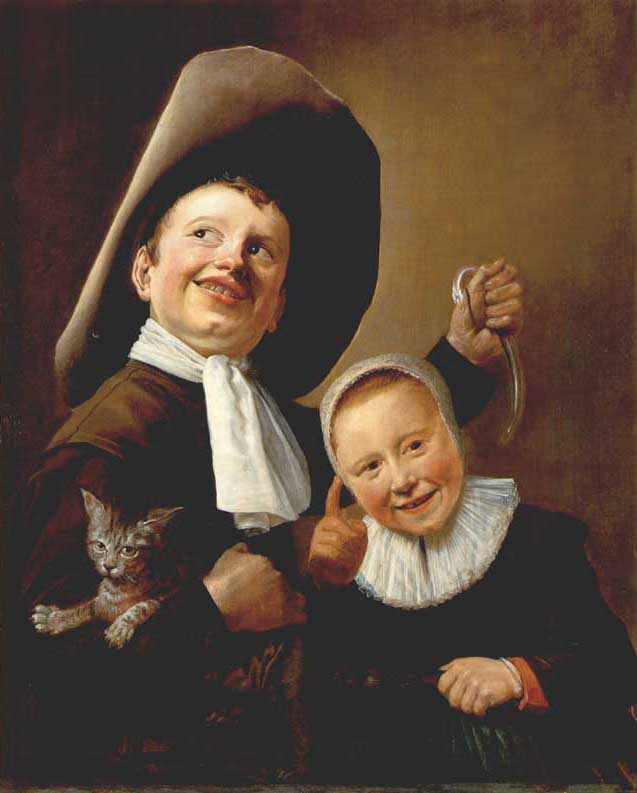Jean-Michel Basquiat (December 22, 1960 – August 12, 1988) was an American artist. His career in art began as a graffiti artist in New York City in the late 1970s, and in the 1980s produced Neo-expressionist paintings. Basquiat died of a heroin overdose on August 12, 1988, at the age of 27.
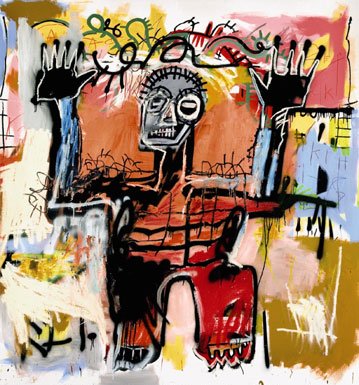 Untitled acrylic, oilstick and spray paint on canvas painting by Jean-Michel Basquiat, 1981
Untitled acrylic, oilstick and spray paint on canvas painting by Jean-Michel Basquiat, 1981
This piece is beyond words for me. It is definitely a blend of Neo-expressionism and graffiti because of the use of spray paint and the expression goes without saying.
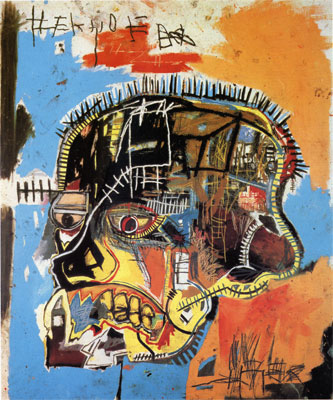 Untitled acrylic and mixed media on canvas by Jean-Michel Basquiat, 1984
Untitled acrylic and mixed media on canvas by Jean-Michel Basquiat, 1984
Definetly graffiti or urban art influenced along with Neo-expressionism. There is so much going on this this head. I like that there seems to be different corridors and 3 dimensional space. I am starting to love Basquiat art!

Painted in 1982, Palm Springs Jump is one of the great exuberant paintings exalting this spirit of improvised adventure and achievement that Basquiat made in a surge of drug and music-fuelled creativity during the heady days when he had just broken through to star status. This is my favorite Basquiat, although I may have said that about the previous two images. The characters in this work are showing so much emotion. I wonder what he was thinking or what kind of drugs he was on when he created this work. Definitely influential.
The second artist I have chosen is Kurt Wenner. Though his work is very different from Basquiat, they both portrait visual street art. Basquiat’s roots were in graffiti and Wenner is a street art master. Wenner began street painting in Rome in 1982, and by 1984 he was recognized as a Master Street Painter. His newly formed art known as “3-D street painting”. It is truly awesome in my opinion. Anytime a piece of art makes you feel like you are moving, or looking extremely deep into it, you know that it is special.
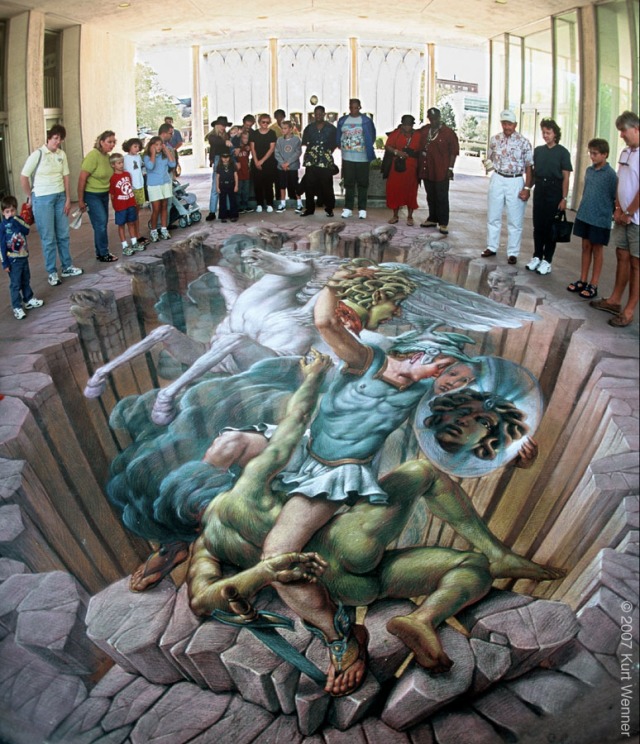
Persus is the title of this painting and was created in 2007, this is also considered to be one of Kurt Wenner’s pieces of Sacred Art. This piece is of Perseus, which was one of the Greek Gods, killing Medusa, which is one of the things he is known for in mythology. I enjoyed this piece because of how deep it takes you underground. I really feel like I could fall in and never stop.
 Dies Irae is the title of this street art piece from 2007. To me this appears to be the gates of hell and the people shown suffering on their way to the hot place. This scares the sin right out of me! Again the depth of the “hell hole” is undefined and there fore I feel like I could fall forever if I leaned in too far for a peak.
Dies Irae is the title of this street art piece from 2007. To me this appears to be the gates of hell and the people shown suffering on their way to the hot place. This scares the sin right out of me! Again the depth of the “hell hole” is undefined and there fore I feel like I could fall forever if I leaned in too far for a peak.
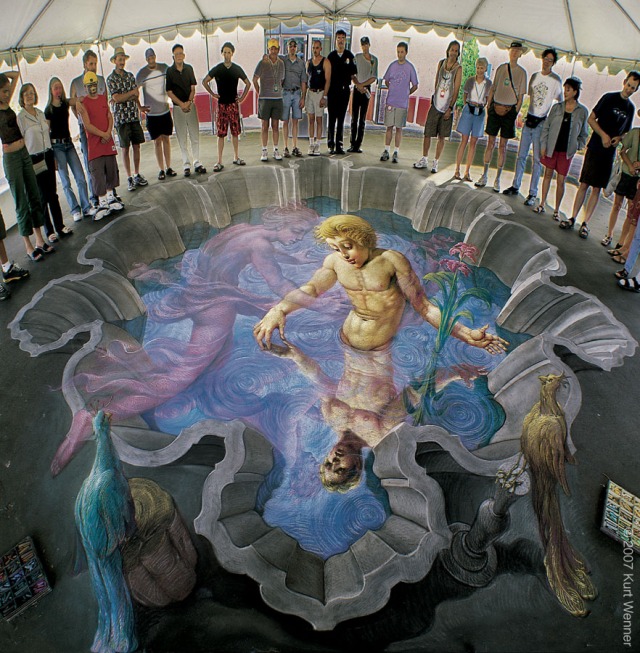 This piece is titled Echo & Narcissus. This is another awesome painting on a flat ground surface that offers depth into the pool. Very cool how the mans reflection is identical to his figure above the water. There is something else going on in this painting. Several other images of people or spirits can be seen under the water, not a reflection, but as if drawing him deeper into the water and possible their spirit world or to seduce him into sin and possible death.
This piece is titled Echo & Narcissus. This is another awesome painting on a flat ground surface that offers depth into the pool. Very cool how the mans reflection is identical to his figure above the water. There is something else going on in this painting. Several other images of people or spirits can be seen under the water, not a reflection, but as if drawing him deeper into the water and possible their spirit world or to seduce him into sin and possible death.
 Statue of Milefo in Emei, Hsinchu, Taiwan
Statue of Milefo in Emei, Hsinchu, Taiwan





 This piece is titled Echo & Narcissus. This is another awesome painting on a flat ground surface that offers depth into the pool. Very cool how the mans reflection is identical to his figure above the water. There is something else going on in this painting. Several other images of people or spirits can be seen under the water, not a reflection, but as if drawing him deeper into the water and possible their spirit world or to seduce him into sin and possible death.
This piece is titled Echo & Narcissus. This is another awesome painting on a flat ground surface that offers depth into the pool. Very cool how the mans reflection is identical to his figure above the water. There is something else going on in this painting. Several other images of people or spirits can be seen under the water, not a reflection, but as if drawing him deeper into the water and possible their spirit world or to seduce him into sin and possible death.

